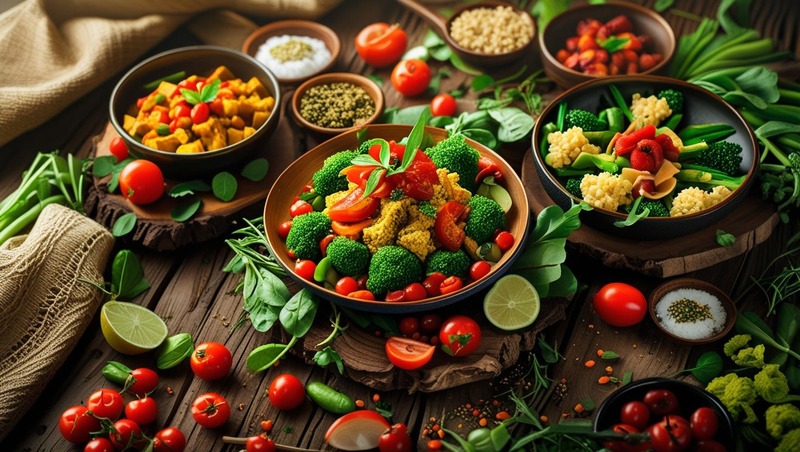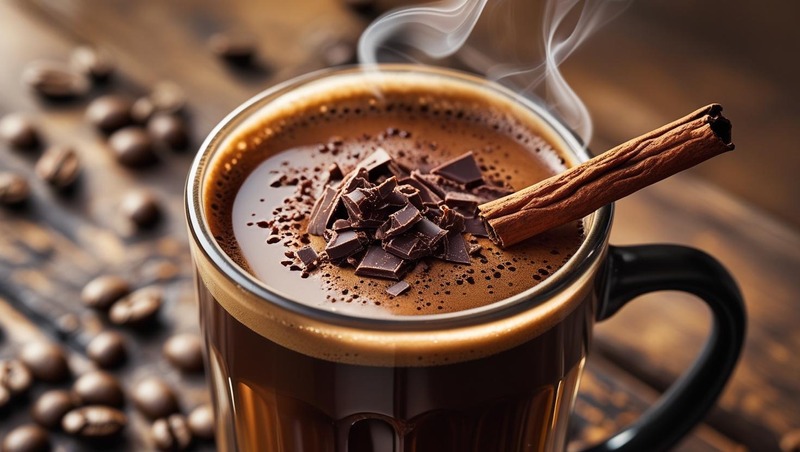Health
How Long Does Lidocaine Last? The Science-Backed Answer

Lidocaine is a widely used local anesthetic, but its duration can vary based on factors like dosage, application method, and individual metabolism. If you’ve ever asked, “How long does lidocaine last?”, this guide delivers precise answers—backed by medical research—so you can use it safely and effectively.
What Is Lidocaine & How Does It Work?
Lidocaine is a fast-acting numbing agent that blocks nerve signals in a specific area. It’s used in:
- Dental procedures
- Minor surgeries
- Topical pain relief (creams, patches)
- Epidurals and nerve blocks
It works by inhibiting sodium channels in nerves, preventing pain signals from reaching the brain.
How Long Does Lidocaine Last? The Breakdown
The duration of lido-caine depends on its form and administration:
1. Injections (Dental/Surgical Use)
- Onset: 2–5 minutes
- Peak Effect: 10–20 minutes
- Duration: 30–90 minutes (up to 3 hours with epinephrine)
Why epinephrine prolongs it: It constricts blood vessels, slowing lido-caine absorption.
2. Topical Creams & Gels (e.g., LMX 4, EMLA)
- Onset: 15–30 minutes
- Duration: 1–2 hours
3. Patches (e.g., Lidoderm)
- Onset: 30–60 minutes
- Duration: Up to 12 hours
4. Intravenous (IV) for Arrhythmias
- Duration: 10–20 minutes (requires continuous infusion)
Note: Individual factors like metabolism, body weight, and injection site affect duration.
Factors That Influence How Long Lidocaine Lasts
| Factor | Impact on Duration |
|---|---|
| Dosage | Higher doses last longer but increase toxicity risk. |
| With Epinephrine | Extends effect by 50–100%. |
| Injection Site | Areas with rich blood supply (e.g., face) absorb it faster. |
| Metabolism | Liver enzymes break it down; faster metabolism = shorter effect. |
| Body Weight | Larger individuals may process it quicker. |
Lidocaine Half-Life: What It Means for You
- Plasma Half-Life: 1.5–2 hours (time for half the drug to leave your bloodstream).
- Full Elimination: 5–6 hours, but numbness wears off sooner.
Safety: How to Avoid Lidocaine Overdose
While lido-caine is safe when used correctly, exceeding doses can cause:
- Mild Side Effects: Dizziness, tingling, blurred vision.
- Severe Toxicity: Seizures, heart arrhythmias (rare but life-threatening).
Max Safe Doses:
- Without Epinephrine: 4.5 mg/kg (300 mg max for adults).
- With Epinephrine: 7 mg/kg (500 mg max).
Tip: Always follow your doctor’s or product label instructions.
Prolonging Lidocaine’s Effects: 3 Expert Tips
- Use Epinephrine-Added Formulas (if medically appropriate).
- Apply Topical Lido-caine Under Occlusion (e.g., cover with a bandage to enhance absorption).
- Avoid Heat (increases blood flow, shortening numbness).
Lidocaine vs. Other Local Anesthetics: A Comparison
| Anesthetic | Onset | Duration | Common Uses |
|---|---|---|---|
| Lidocaine | Fast | 30–90 min | Dental, minor surgery |
| Bupivacaine | Slow | 4–8 hours | Labor epidurals |
| Procaine | Moderate | 30–60 min | Short procedures |
Key Takeaway: Lido-caine is ideal for quick procedures; bupivacaine suits long-lasting pain relief.
FAQs
Can lido-caine wear off too quickly?
Yes—if injected into a vascular area or without epinephrine.
How long does lido-caine last in the mouth after dental work?
Typically 1–3 hours; avoid hot foods until sensation returns.
Does lidocaine expire?
Yes! Expired lido-caine may lose potency or become unsafe.
When to Seek Medical Help
Contact a doctor if you experience:
- Irregular heartbeat
- Difficulty breathing
- Severe allergic reactions (rash, swelling)
Conclusion: Maximizing Lidocaine’s Benefits Safely
Now that you know how long does lidocaine last, you can use it more effectively—whether for pain relief or medical procedures. Always adhere to dosage guidelines and consult a healthcare provider for personalized advice.
Health
Delicious Low-Salt Vegetarian Recipes for a Healthier You

Are you looking to cut back on sodium without sacrificing flavor? You’re not alone. With growing concerns about high blood pressure, heart disease, and water retention, many people are turning to low-salt vegetarian meals. But here’s the good news—reducing salt doesn’t mean reducing taste.
In this guide, we’ll explore flavor-packed, low-sodium vegetarian recipes, backed by expert tips and fresh ingredients that keep your meals exciting. Whether you’re managing a health condition or simply aiming for a cleaner diet, these dishes will prove that eating well can still be delicious.
Why Go Low-Salt & Vegetarian?
Before diving into the recipes, let’s understand why this combo works:
✅ Heart Health – The American Heart Association recommends no more than 2,300 mg of sodium per day (ideally 1,500 mg for those with hypertension). Plant-based diets naturally support cardiovascular health.
✅ Better Kidney Function – Excess salt strains the kidneys. A low-sodium vegetarian diet eases this burden.
✅ Reduced Bloating – High sodium causes water retention. Cutting back leads to a lighter, less puffy feeling.
✅ Enhanced Natural Flavors – Relying on herbs, spices, and umami-rich ingredients (like mushrooms and nutritional yeast) makes food taste richer without salt.
5 Expert Tips for Low-Salt Cooking
-
Use Fresh Herbs & Spices – Basil, cilantro, cumin, turmeric, and smoked paprika add depth.
-
Leverage Citrus & Vinegar – Lemon juice, apple cider vinegar, and balsamic bring brightness.
-
Roast or Sauté for Depth – Caramelized onions, garlic, and roasted veggies intensify flavor.
-
Choose No-Salt-added Ingredients – Opt for unsalted canned beans, nut butters, and broths.
-
Try Umami Boosters – Tomatoes, mushrooms, miso (low-sodium), and nutritional yeast mimic savory depth.
7 Low-Salt Vegetarian Recipes to Try Tonight
1. Garlic & Herb Roasted Chickpea Bowl (Sodium: ~150mg per serving)
Why it works: Chickpeas are protein-rich, and roasting them with garlic, rosemary, and olive oil makes them crispy and flavorful.
Ingredients:
-
1 can (low-sodium) chickpeas, rinsed
-
2 tbsp olive oil
-
3 garlic cloves, minced
-
1 tsp smoked paprika
-
1 tbsp fresh rosemary
-
1 cup quinoa (cooked)
-
Handful of spinach
Method:
-
Toss chickpeas with oil, garlic, and spices. Roast at 400°F for 20 mins.
-
Serve over quinoa and spinach. Drizzle with lemon juice.
2. Creamy Avocado & White Bean Wrap (Sodium: ~200mg)
Why it works: Avocado adds creaminess, while white beans provide fiber—no mayo needed!
Ingredients:
-
1 whole wheat tortilla
-
½ avocado, mashed
-
½ cup low-sodium white beans
-
¼ tsp cumin
-
Sliced cucumbers, bell peppers
-
Fresh cilantro
Method:
-
Mash avocado and beans with cumin.
-
Spread on tortilla, add veggies, wrap, and enjoy!
3. Spicy Lentil & Sweet Potato Curry (Sodium: ~180mg)
Why it works: Lentils absorb spices beautifully, while coconut milk adds richness.
Ingredients:
-
1 cup red lentils
-
1 sweet potato, diced
-
1 can (low-sodium) coconut milk
-
1 tbsp curry powder
-
½ tsp turmeric
-
Fresh ginger, garlic
Method:
-
Sauté ginger and garlic. Add spices, lentils, sweet potato, and coconut milk.
-
Simmer 25 mins. Serve with brown rice.
4. Zucchini Noodles with Basil Pesto (Sodium: ~120mg)
Why it works: Zucchini is hydrating, and homemade pesto skips the excess salt.
Ingredients:
-
2 zucchinis, spiralized
-
1 cup fresh basil
-
2 tbsp pine nuts
-
1 garlic clove
-
1 tbsp nutritional yeast
-
2 tbsp olive oil
Method:
-
Blend basil, nuts, garlic, yeast, and oil into pesto.
-
Toss with zucchini noodles.
5. Stuffed Bell Peppers with Quinoa & Black Beans (Sodium: ~200mg)
Why it works: A complete protein-packed meal with vibrant flavors.
Ingredients:
-
4 bell peppers, halved
-
1 cup cooked quinoa
-
½ cup low-sodium black beans
-
1 tsp cumin
-
½ cup corn
-
Fresh lime juice
Method:
-
Mix quinoa, beans, corn, and spices. Stuff peppers.
-
Bake at 375°F for 25 mins.
6. Mushroom & Spinach Frittata (Sodium: ~150mg)
Why it works: Eggs provide protein, while mushrooms add umami.
Ingredients:
-
4 eggs
-
1 cup spinach
-
½ cup mushrooms
-
¼ tsp black pepper
-
1 tbsp olive oil
Method:
-
Sauté mushrooms and spinach.
-
Whisk eggs, pour over veggies, cook on low until set.
7. Chia Seed Pudding with Berries (Sodium: ~50mg)
Why it works: A naturally sweet, no-salt dessert or breakfast.
Ingredients:
-
2 tbsp chia seeds
-
1 cup almond milk (unsweetened)
-
½ cup mixed berries
-
1 tsp vanilla extract
Method:
-
Mix chia seeds and milk, refrigerate overnight.
-
Top with berries before serving.
Final Thoughts: Low-Salt Vegetarian Recipes
Reducing sodium doesn’t require bland meals—just smarter cooking. With Low-Salt Vegetarian Recipes by using herbs, spices, and fresh ingredients, you can enjoy vibrant, satisfying vegetarian dishes that support long-term health.
Health
Spiked Coffee Recipe: Elevate Your Brew with a Boozy Twist

Ever wondered how to turn your morning coffee into a happy hour treat? Whether you’re hosting brunch, winding down after dinner, or just craving something different, spiked coffee is the perfect way to blend rich flavors with a spirited kick. From classic Irish Coffee to creative modern twists, we’ve got expert-backed recipes, pro tips, and everything you need to craft the perfect boozy brew.
Why Spiked Coffee?
Spiked coffee isn’t just a winter warmer—it’s a versatile drink that can be enjoyed year-round. According to mixologists, the combination of coffee’s bitterness and the sweetness or smokiness of liquor creates a balanced, complex flavor profile. Plus, caffeine and alcohol have an interesting synergy—when consumed in moderation, the buzz can feel more uplifting than a standard cocktail.
Best Alcohols for Spiking Coffee
Not all spirits pair well with coffee. Here are the top choices:
✔ Whiskey (Bourbon, Irish, or Rye) – Adds warmth and depth.
✔ Rum (Dark or Spiced) – Brings caramel and vanilla notes.
✔ Kahlúa or Coffee Liqueur – Enhances coffee flavor with sweetness.
✔ Baileys Irish Cream – Creamy, smooth, and slightly sweet.
✔ Vodka (Flavored or Plain) – Neutral taste, great for chilled recipes.
✔ Amaretto – Nutty and aromatic, perfect for dessert-like coffee.
5 Must-Try Spiked Coffee Recipes
1. Classic Irish Coffee (The Timeless Favorite)
Ingredients:
-
1 cup hot brewed coffee
-
1.5 oz Irish whiskey
-
1 tbsp brown sugar
-
Heavy cream (lightly whipped)
Instructions:
-
Preheat a glass with hot water, then discard.
-
Add sugar and coffee, stirring until dissolved.
-
Stir in whiskey.
-
Gently float whipped cream on top (pro tip: pour over the back of a spoon).
-
Sip without stirring to enjoy the layers.
Why It Works: The cream mellows the whiskey’s bite while the sugar balances the coffee’s bitterness.
2. Espresso Martini Coffee (A Caffeinated Cocktail)
Ingredients:
-
1 oz vodka
-
1 oz Kahlúa
-
1 oz fresh espresso (chilled)
-
½ oz simple syrup
-
Ice
-
Coffee beans (garnish)
Instructions:
-
Shake all ingredients with ice until well-chilled.
-
Strain into a martini glass.
-
Garnish with coffee beans.
Perfect For: A post-dinner pick-me-up with a sophisticated edge.
3. Bourbon Spiked Cold Brew (Smooth & Refreshing)
Ingredients:
-
1 cup cold brew coffee
-
1.5 oz bourbon
-
½ oz maple syrup
-
Orange zest (optional)
Instructions:
-
Fill a glass with ice.
-
Add cold brew, bourbon, and maple syrup.
-
Stir well and garnish with orange zest.
Why It’s Great: The maple syrup complements bourbon’s smokiness, while cold brew keeps it smooth.
4. Coconut Rum Iced Coffee (Tropical Twist)
Ingredients:
-
1 cup iced coffee
-
1.5 oz coconut rum
-
1 oz cream of coconut
-
Whipped cream & toasted coconut flakes (garnish)
Instructions:
-
Shake coffee, rum, and cream of coconut with ice.
-
Strain into a tall glass over fresh ice.
-
Top with whipped cream and coconut flakes.
Ideal For: Summer sipping by the pool.
5. Salted Caramel Spiked Latte (Decadent Dessert Drink)
Ingredients:
-
1 cup brewed coffee
-
1 oz caramel vodka
-
½ oz butterscotch schnapps
-
1 tbsp salted caramel sauce
-
Steamed milk
-
Whipped cream & extra caramel drizzle
Instructions:
-
Mix coffee, vodka, schnapps, and caramel sauce.
-
Add steamed milk and stir.
-
Top with whipped cream and extra caramel.
Why You’ll Love It: A boozy take on your favorite coffeehouse treat.
Expert Tips for the Best Spiked Coffee
✅ Quality Matters – Use freshly brewed coffee for the best flavor.
✅ Balance Sweetness – Adjust sugar or syrup to taste.
✅ Temperature Control – Hot coffee should be hot, cold drinks should be chilled.
✅ Garnish Like a Pro – Cinnamon, cocoa powder, or citrus zest elevate presentation.
✅ Know Your Limits – Caffeine + alcohol can be dehydrating; drink water between servings.
Final Thoughts: Spiked Coffee Recipe
Spiked Coffee Recipe is more than just a cocktail—it’s an experience. Whether you prefer the boldness, the creaminess of Baileys, or the tropical vibes, there’s a boozy coffee recipe for every palate. Next time you’re craving something beyond your usual cup, try one of these recipes and savor the rich, spirited flavors.
Health
Apple Cider Vinegar Tonic: A Powerhouse Elixir for Health?

Could a simple kitchen staple be the secret to better digestion, weight loss, and glowing skin?
Apple cider vinegar (ACV) has been a folk remedy for centuries, but modern science is now catching up to its potential benefits. From detox tonics to immune-boosting shots, ACV is making waves in the wellness world. But does it live up to the hype?
In this deep dive, we’ll explore:
✅ The science-backed benefits of apple cider vinegar tonic
✅ How to make it (plus delicious variations)
✅ Potential side effects and who should avoid it
✅ Real-world success stories from ACV enthusiasts
Let’s separate fact from fad and uncover whether this tangy tonic deserves a spot in your daily routine.
What Is Apple Cider Vinegar Tonic?
Apple cider vinegar tonic is a diluted mixture of ACV, water, and often additional ingredients like honey, lemon, or spices. Unlike straight ACV (which can damage tooth enamel and irritate the throat), a tonic makes it safer and more palatable.
Why the “Mother” Matters
Raw, unfiltered ACV contains the “mother”—a cloudy substance rich in probiotics, enzymes, and acetic acid. This is where most of the health benefits come from. Always opt for organic, unpasteurized ACV with the mother for maximum potency.
6 Science-Backed Benefits of Apple Cider Vinegar Tonic
1. Supports Healthy Digestion
ACV’s acetic acid may boost stomach acid production, aiding digestion and reducing bloating. A 2016 study in Journal of Clinical Gastroenterology found that ACV helps with gastric emptying, which can prevent acid reflux.
Pro Tip: Sip 1 tbsp ACV in water before meals to kickstart digestion.
2. May Aid Weight Loss
Several studies suggest ACV can promote satiety and reduce calorie intake. A 2018 study in Journal of Functional Foods found that participants who consumed ACV daily lost more weight than those who didn’t.
How it works: Acetic acid may suppress fat storage and curb sugar cravings.
3. Balances Blood Sugar Levels
Research in Diabetes Care (2004) showed that ACV improves insulin sensitivity by 19-34% after high-carb meals. This makes it a potential ally for diabetics and prediabetics.
Best Time to Drink: Before or with meals to blunt blood sugar spikes.
4. Boosts Immunity
The antimicrobial properties of ACV (thanks to acetic acid) may help fight pathogens. Some people use it as a natural sore throat remedy or immune tonic during cold season.
Try This: Mix ACV with honey, ginger, and warm water for a soothing immune shot.
5. Enhances Skin Health
Diluted ACV can act as a natural toner, balancing skin pH and reducing acne. Its antibacterial properties may also help with eczema and dandruff.
Caution: Always dilute (1 part ACV to 3 parts water) to avoid irritation.
6. Detoxifies the Body
While the liver does most of the detox work, ACV may support liver function by promoting circulation and lymphatic drainage. Some detox regimens include ACV as a morning cleanse.
How to Make the Perfect Apple Cider Vinegar Tonic
Basic Recipe
-
1-2 tbsp raw apple cider vinegar (with mother)
-
8 oz warm or cold water
-
Optional: 1 tsp honey, lemon juice, cinnamon, or cayenne
Instructions:
-
Mix ACV and water.
-
Add optional flavor boosters.
-
Drink once daily (best in the morning or before meals).
5 Delicious Variations
-
Metabolism Booster: ACV + lemon + cayenne
-
Gut-Healing Tonic: ACV + ginger + turmeric
-
Immune Shot: ACV + honey + cinnamon
-
Hydrating Electrolyte Drink: ACV + coconut water + sea salt
-
Bedtime Relaxation Tonic: ACV + chamomile tea + raw honey
Potential Side Effects & Who Should Avoid It
While ACV is generally safe, overuse can cause:
-
Tooth enamel erosion (always dilute and rinse mouth after)
-
Throat irritation (never drink undiluted)
-
Low potassium levels (avoid if on diuretics)
-
Digestive upset (start with 1 tsp and increase gradually)
Who Should Skip It?
-
People with acid reflux (can worsen symptoms in some)
-
Those with sensitive stomachs or ulcers
-
Anyone on diabetes meds (consult a doctor first)
Real-World Success Stories
✔ Sarah, 34: “ACV tonic helped me lose 12 lbs in 3 months by curbing my sugar cravings.”
✔ Mark, 42: “My fasting blood sugar dropped 20 points after adding ACV before meals.”
✔ Lisa, 28: “My skin cleared up within weeks of using ACV as a toner.”
Final Verdict: Should You Try It?
Apple cider vinegar tonic isn’t a magic cure-all, but research and anecdotal evidence suggest it can be a powerful addition to a healthy lifestyle.
Key Takeaways:
🔹 Start small (1 tsp in water) and increase gradually.
🔹 Always dilute to protect teeth and throat.
🔹 Pair with a balanced diet for best results.
-

 Articles3 months ago
Articles3 months agoHow Many Times Can You Regrow Green Onions
-

 News10 months ago
News10 months agoUnderstanding HotLeaks: What You Need to Know
-

 Fashion8 months ago
Fashion8 months agoOpals in the USA: A Gemstone Transforming the Crystal Healing Market
-

 Entertainment7 months ago
Entertainment7 months agoHow to Use Snaptik: A Complete Guide to Download TikTok Videos
-

 Technology1 year ago
Technology1 year agoThe Wonders of Oh Em Gee Blog
-

 Entertainment1 year ago
Entertainment1 year agoBare it All: Unforgettable Skinny Dipping Stories Shared
-

 Health1 year ago
Health1 year agoCan You Smoke Shrooms? Exploring the Myths and Realities
-

 Articles5 months ago
Articles5 months agoWHAT IS THE DIFFERENCE BETWEEN SEED GARLIC AND FOOD GARLIC?
